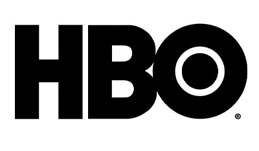 We are not just entertainers. We are doctors, financiers and activists. As Black History Month begins, The Paley Center in New York opened its doors to preview Timothy Greenfield-Sanders & Elvis Mitchell’s third installment of “The Black List†(which premiered on HBO on Monday, February 8).
We are not just entertainers. We are doctors, financiers and activists. As Black History Month begins, The Paley Center in New York opened its doors to preview Timothy Greenfield-Sanders & Elvis Mitchell’s third installment of “The Black List†(which premiered on HBO on Monday, February 8).
The project discusses and questions the relationship that African-Americans have with their ancestry and what, if anything, they may owe to themselves and the community. Essentially, this volume further explores the ongoing reflections of the rainbow that makes up black America.
Upon entering The Paley Center, you are met with the documentary and portraits of the people who were featured in Volume II of “The Black List.†The photographs, done by Greenfield-Sanders, reveal an inner strength, particularly in the hands of his subjects. Whether hidden or displayed, the characteristics of power and determination are there as much as in their facial expressions and physical stances.
As the night went on, Elvis Mitchell moderated the events. With humorous-wit, he introduced a compilation of the first two installments, followed by the featured presentation of volume III of “The Black List.†The 11-minute montage emphasized the vision of this project. On running for the highest political office in the U.S., Sharpton – realizing he had no chance of winning – knew that his being a part of the process meant that society “couldn’t control the debate.†And novelist Toni Morrison discussed, on a personal level, what it meant to have something of your own where she described “Writing [as] the only free place†– essentially, creating a sphere in which you are in control.
Finally, “The Black List Volume III†began, as it “chronicles the lives of African-American achievers in their own words.†In “redefining the black list,†several new voices continued the conversation. It began with John Legend and his relationship with Gospel music, God and what faith means when you’re a black man singing what is perceived as secular music.
Other highlights included actor Hill Harper who asked the question: “What does your heart say?†As someone who went to law school with President Obama, it’s a loaded question for a black man to ask. However, the most powerful interviews (unobtrusively done by Mitchell) were of president and CEO of the United Negro College Fund, Dr. Michael Lomax and film director Lee Daniels.
Lomax’s life led him to “pursue power.†His mother, Almena Lomax (a journalist who created her own paper after being frustrated with the newspaper establishment), was a whirlwind as she uprooted her family from a comfortable life in California to the segregated south. Her writing, while it did not win Pulitzers, helped define the voice of the fight for civil rights. She was one of the few women of color who wrote about the atrocities that occurred during this time period with an authoritative and authentic voice.
Though he did not have the final say in this truncated volume (the first two are at least an hour long), Lee Daniels (“Shadowboxer†and “Preciousâ€) talks about what it means to be a gay, black man in America. His telling of walking into a clinic and seeing a sea of black women further propels his mission to “try to tell stories about us.†Appropriately, Whoopi Goldberg was the last to be shown. She said it best: “I am representing; I’m here.â€
After the viewing a forum involving co-founder and president of The Center for the Advancement of Women, Faye Wattleton (volume I), Dr. Lomax, Greenfield-Sanders and Mitchell was held to further discuss the ideas brought up in the documentary. The panel went into depth about how “African-Americans have a wide range of experiences,†the “residual damage of segregation,†and the “Cultural identity that is needed for the cohesion of a group.†It made for stimulating conversation.
Just how important is “The Black List?†In a country that has a president of biracial-heritage who identifies himself as a black man and the continuous role of African-American women in non-traditional roles, Dr. Lomax says it best: “The Black List gives diversity in a contemporary setting.†This includes everyone, not just blacks, in the conversation.
Should you see this film? Yes; not for the historical context or because it’s Black History Month, but because you’ll be enriched from the experience.

For those who are impressed with Elvis Mitchell’s “unobtrusive interview” style, you may want to tune in to his weekly public radio program, produced and distributed by public radio station KCRW-Santa Monica. THE TREATMENT WITH ELVIS MITCHELL. You’ll find it on air, online, on-demand and on podcasts at http://www.kcrw.com/thetreatment. He talks in-depth with leading cultural figures in all fields.